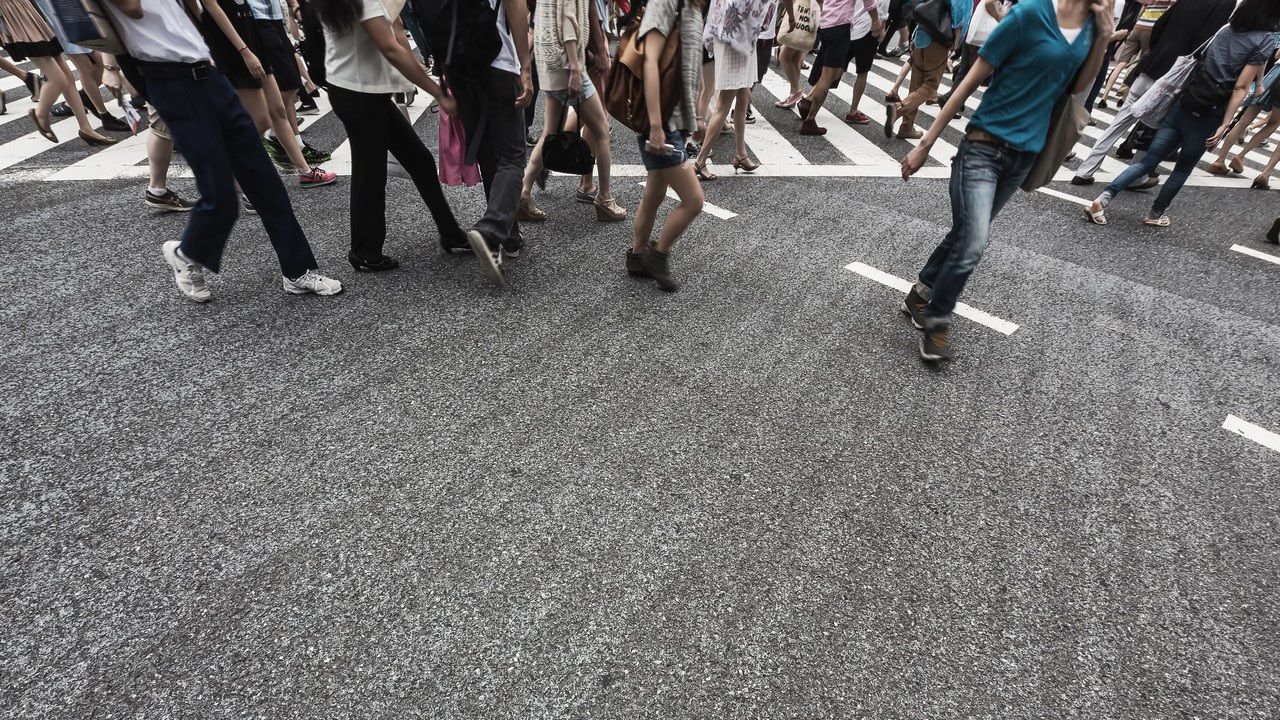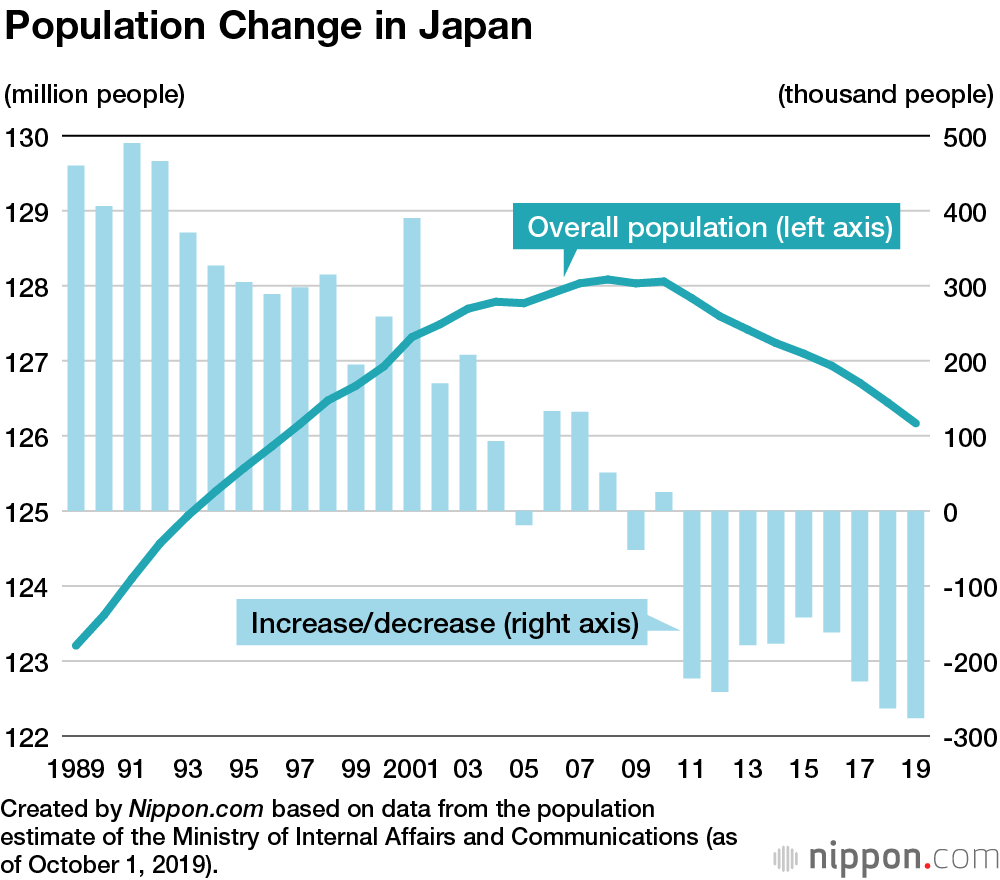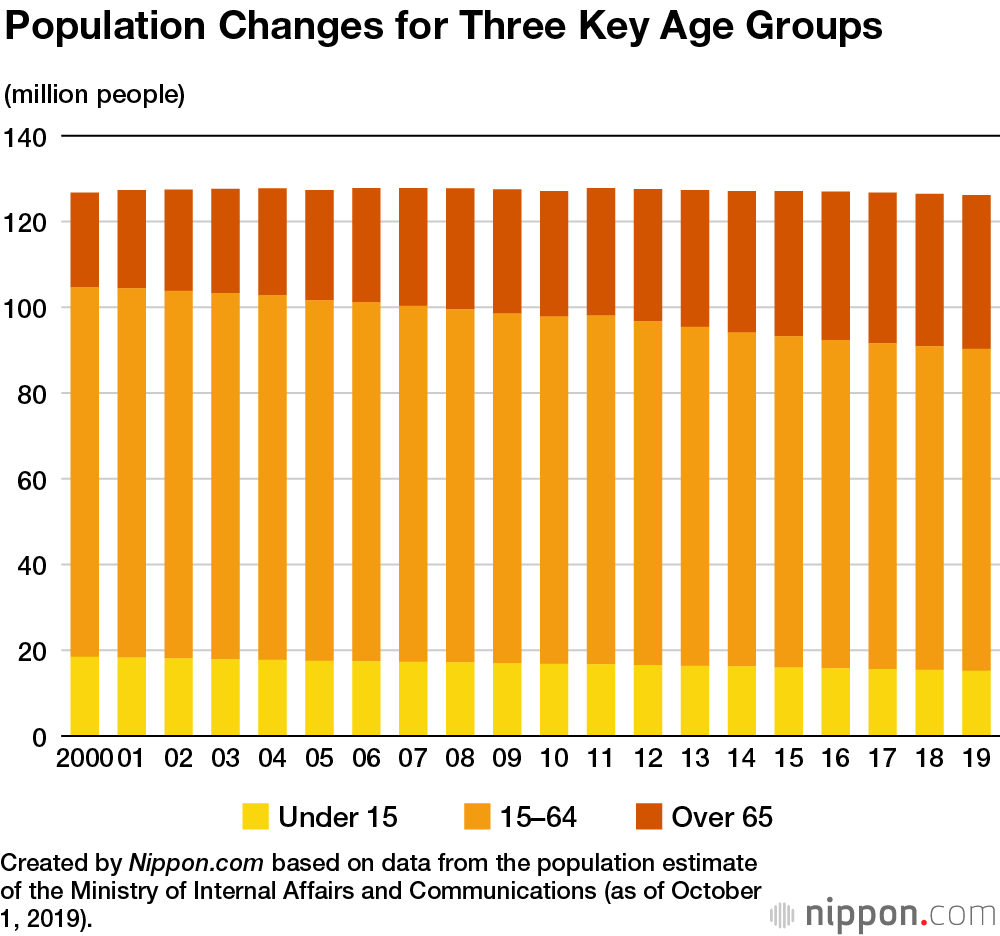
Japan’s Population Falls for Ninth Straight Year
Economy Society Lifestyle- English
- 日本語
- 简体字
- 繁體字
- Français
- Español
- العربية
- Русский
Japan’s population as of October 1, 2019, was 126,167,000, according to an estimate by the Ministry of Internal Affairs and Communications; a decrease of 276,000, or 0.22%, compared to the previous year. This is the ninth consecutive annual decline and the largest margin of decrease on record.
Among those living in Japan, 123,731,000 were Japanese citizens, a year-on-year decrease of 487,000, or 0.39%. Meanwhile, the number of foreign residents in Japan rose for the seventh consecutive year, with 208,000 more new foreigners coming into the country than those leaving. In total, foreign residents made up 1.93% of the overall population.
In 2019, there were 75.1 million people between the ages of 15 and 64 in what is defined as the working-age population, a year-on-year decrease of 379,000 people. This age bracket accounted for 59.5% of the population, the lowest percentage on record since 1950, when statistics were first kept. The number of those 65 and older rose year on year by 307,000, for a total of 35.9 million, accounting for a record high 28.4% of the total population. Those 75 or older increased year on year by 515,000, for a total of 18.5 million, thus accounting for more than half of the entire population 65 or older.
The statistics reveal a social structure in Japan that is becoming increasingly reliant on foreign workers as the country’s own workforce contracts due to a low birth rate and aging population.
(Translated from Japanese. Banner photo © Pakutaso.)

